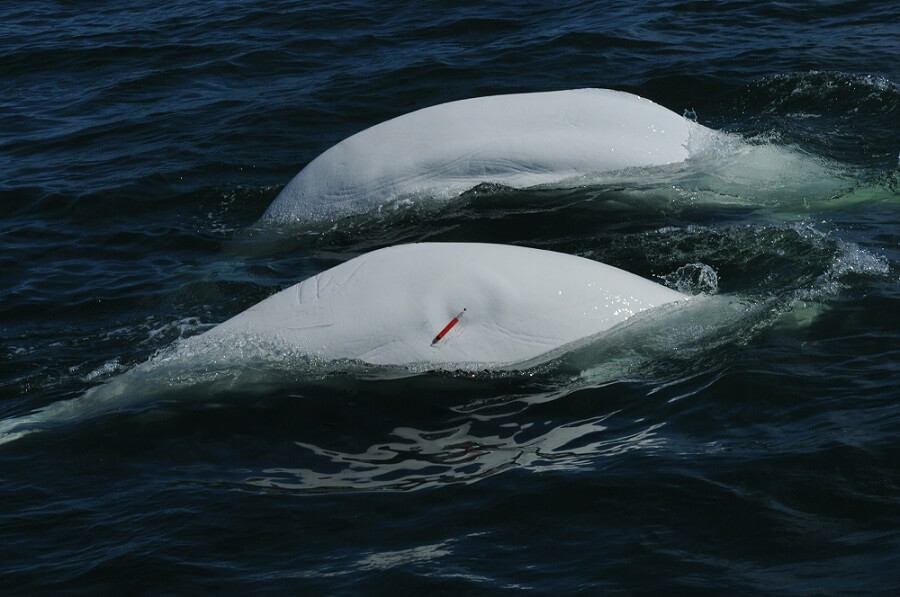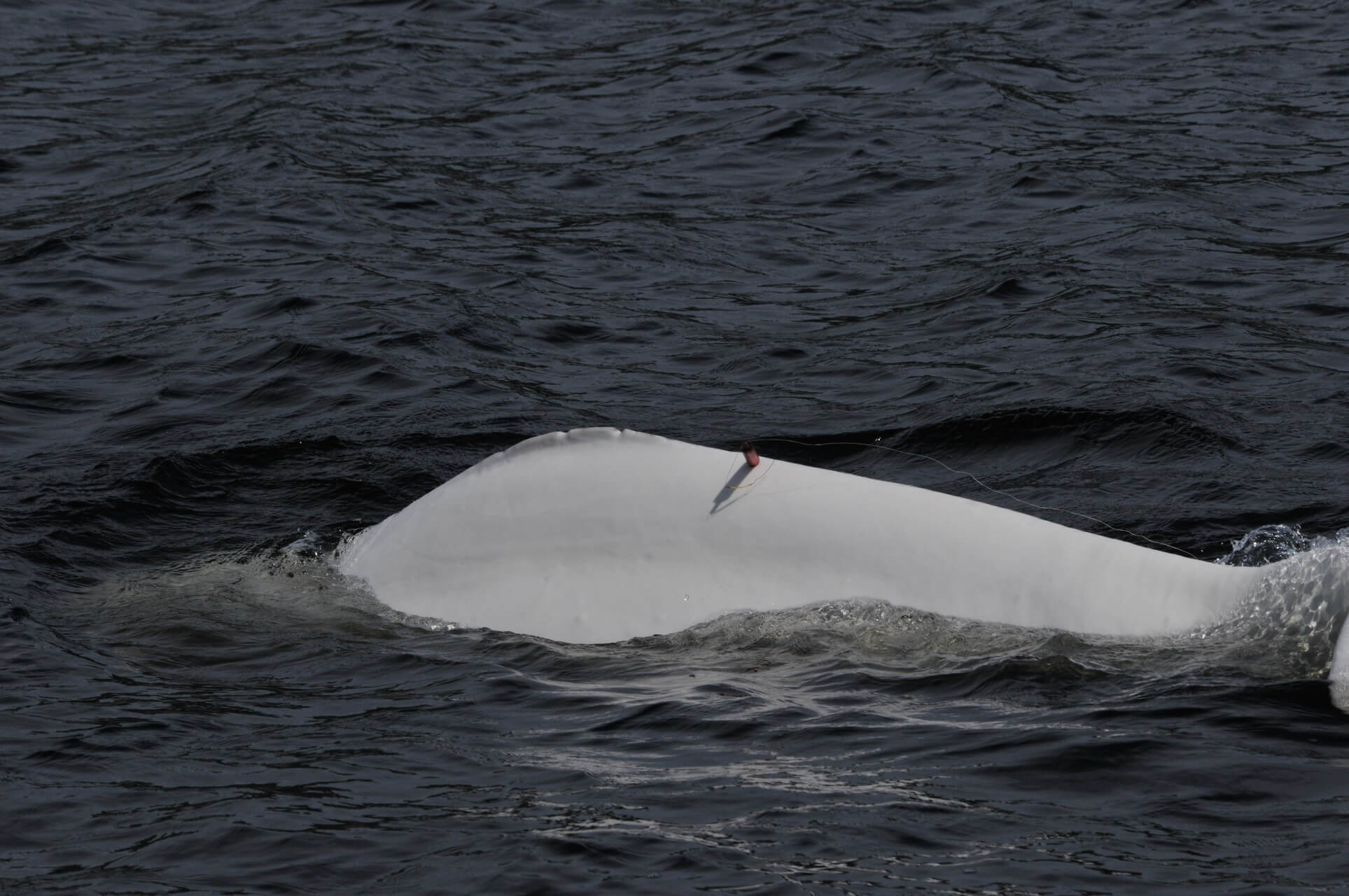Since 1994, GREMM’s research team has been conducting a long-term biopsy program (article in French) on the beluga population of the St. Lawrence Estuary. These biopsies, which consist of taking skin and fat samples using a small dart, provide a great deal of scientific information that can be used for conservation. However, a recently published study revealed that if biopsy sampling penetrates too deeply, there is a risk that the animal’s muscles and bones could be affected. In this context, one concerned reader asked us whether we were taking the necessary measures to minimize the potential impacts of biopsies on the well-being and health of cetaceans.
Hitting the mark...
As you might well imagine, GREMM also cares tremendously about the health and welfare of belugas. Very early on, the research team implemented measures to limit their impact on belugas. From the start of the program 35 years ago, GREMM scientists chose to take the samples in a zone of least impact: “We target a narrow band just under the dorsal crest and our success rate in hitting this area is very high,” explains Robert Michaud, director of GREMM’s research programs.
...with the right dart
Beginning in 1994, the team equipped itself with the least invasive equipment possible according to the most current knowledge at the time. GREMM thus uses long, lightweight darts with small diameters, which are designed to collect a sufficient quantity of DNA to carry out genetic analyses while minimizing the injuries that might be caused by a biopsy. Moreover, after the publication of a study warning about behavioural changes in killer whales when firing darts, the team changed its approach and switched to even lighter and less invasive darts.
Surprise effect
Are belugas bothered by all this sampling? To answer this question, the research team looked at the effects of a biopsy sample on the behaviour of individuals, both in the short and long term. In the short term, “The belugas feel the surprise effect, probably because of the sounds they are hearing around them! They dive and then resurface after a minute or two,” comments Michaud. In the long term, researchers determined that the recapture rate, i.e. the number of times a given individual is photographed and identified when it comes to the surface, remains constant even after a biopsy. This seems to show that, over the long run, their behaviour is not affected by this isolated event.
Avoiding redundancies
Another important point for limiting the impact of biopsies on belugas is to avoid sampling the same individual more than once. Only previously photo-identified individuals are targeted for skin and fat sampling. This technique is yielding results: Of the 288 biopsies performed since 1994, the team has only produced 9 duplicates.
It is noted that for some projects, the risk of duplicates is higher and therefore more difficult to avoid. In addition to collecting biopsies from new individuals every year, the team carried out two research projects involving more sustained sampling. Every September between 2013 and 2016, researchers took 203 additional biopsies to assess beluga pregnancy rates. Another project is currently underway that will entail similar sampling in September to understand the impact of contamination of the St. Lawrence River on beluga health.
Balancing risks and benefits
Nevertheless, the decision to perform biopsies on an endangered species was not taken lightly. Taking biopsies is an invasive approach and should not be trivialized. Without a doubt, biopsies entail risks for the animals sampled, but they make it possible to carry out DNA and toxicological analyses that would not be possible with any other approach. “We collaborated on a study that looked at the evolution of scars and whether the behaviour of biopsied animals might change in the medium or long term. The study concluded that, as far as we can tell, the impacts of biopsies were acceptably low and that the benefits outweigh the risks,” points out Robert Michaud.
Every year, in order to obtain authorization to perform biopsies, GREMM’s scientific team must apply for a research permit from Fisheries and Oceans Canada and the Saguenay-St. Lawrence Marine Park. The use of biopsies must constantly be justified and validated. GREMM must also submit its projects annually to animal health committees. “These issues are taken very seriously, and rightly so,” concludes Michaud







